Achieving a strong core is essential for overall fitness, and the NordBench is your perfect partner in this journey. Whether you're a fitness enthusiast or someone who loves to work out at home, this versatile bench offers a multitude of core exercises that can enhance your core strength and stability.
From modified sit-ups and Russian twists to back extensions, the NordBench caters to all levels, ensuring you can progress at your own pace. In this guide, we'll explore three of the best core exercises you can perform using the NordBench, providing you with the tools and confidence to strengthen your core muscles effectively and comfortably.
Key Takeaways
- Target your entire core: With exercises like sit-ups, Russian twists, and back extensions, the NordBench helps you strengthen your abs, obliques, and lower back all in one.
- Maximize stability and control: The NordBench provides added support and range of motion, allowing you to perform core exercises with greater precision and effectiveness.
- Core workouts made versatile: Whether you're a beginner or advanced, these exercises can be easily modified on the NordBench to match your fitness level and goals.
Get ready to transform your core workout routine with these empowering exercises that are as supportive as they are challenging.
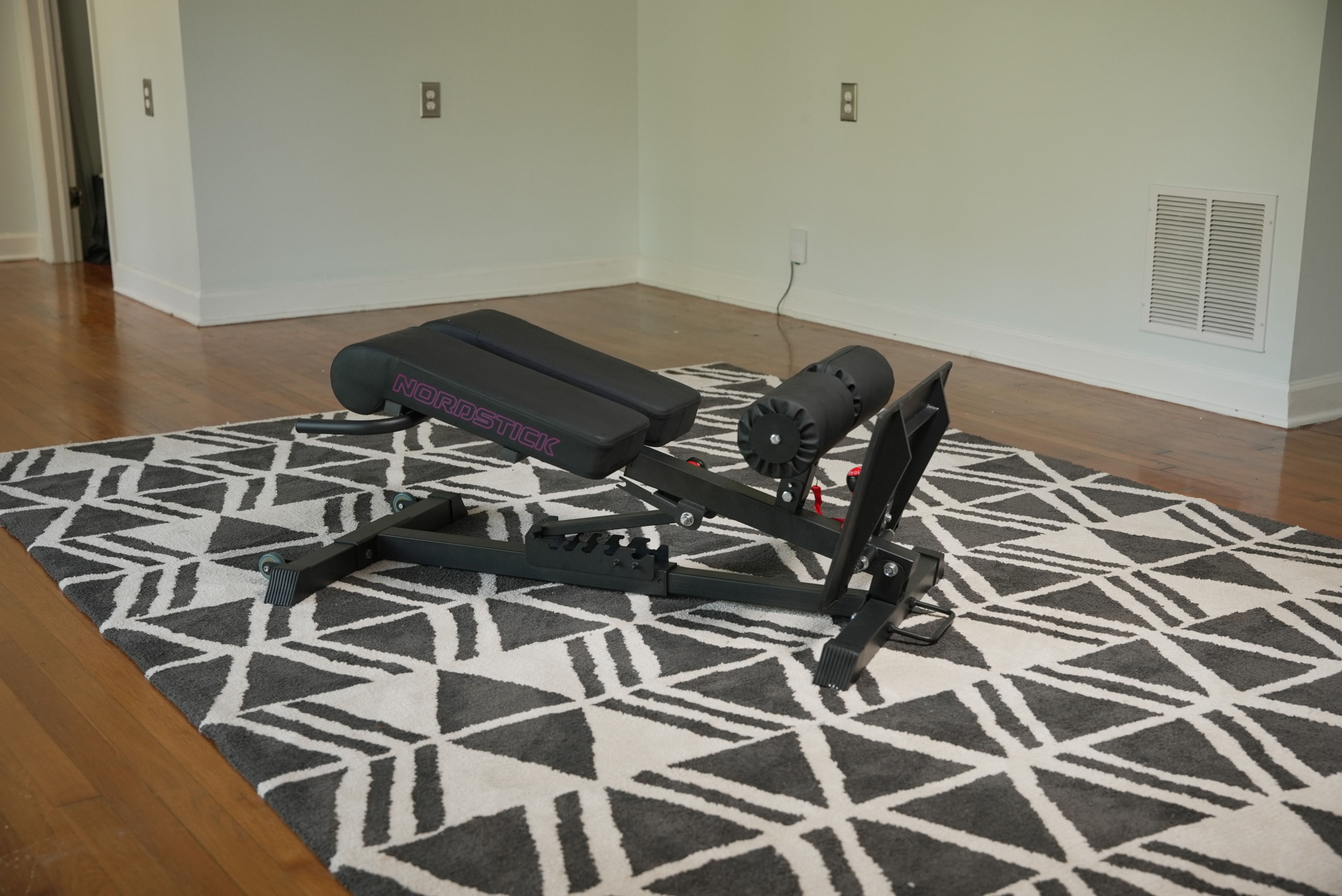
Modified Sit Ups
15-Degrees While Touching the Ground
When doing modified sit-ups at a 15-degree angle using the NordBench, you engage your core muscles efficiently while maintaining proper form.
Start by lying on your back with your knees bent and feet flat on the bench. Your arms can be in front of you or crossed over your chest. As you slowly roll your torso upward, focus on keeping your movements controlled to maximize core engagement.
This angle is particularly effective for targeting the upper abdominal muscles and the rectus abdominis, minimizing the strain on your lower back. Remember to breathe steadily throughout the exercise, exhaling as you lift your torso and inhaling as you slowly lower it back to the starting position.
For beginners, this variation provides a safe and manageable way to build a strong core without compromising stability. Consistent practice of this movement can lead to improved core strength, aiding in everyday physical activities.
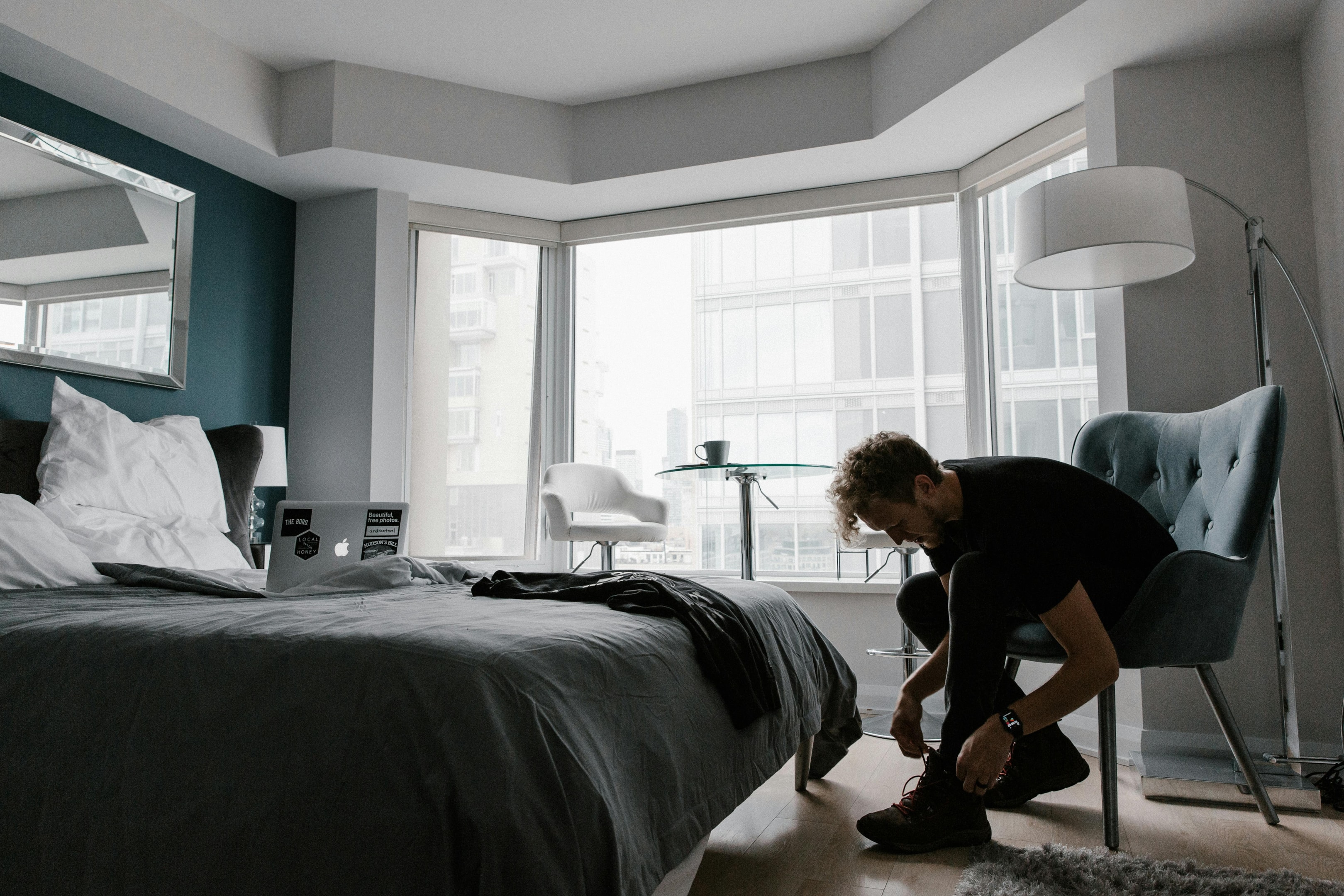
25 Degrees for a Wider Range of Motion
Adjusting the NordBench to a 25-degree angle allows for a broader range of motion during your sit-ups, intensifying the workout for your core muscles.
Position yourself with your feet flat on the bench, knees bent, and lie back with your arms overhead or crossed. As you initiate the movement, engage your core by pulling your belly button toward your spine, keeping a neutral spine as you rise.
This increased angle challenges not just your upper ab muscles but also involves your hip flexors and lower abs more actively. Ensure your movements are slow and deliberate, exhaling as you come up and inhaling as you return to the starting position.
This variation enhances your core training by promoting greater flexibility and strength in the abdominal region. Incorporating this exercise into your routine helps in reducing body fat and supporting overall core stability, benefiting your entire body during other physical activities.
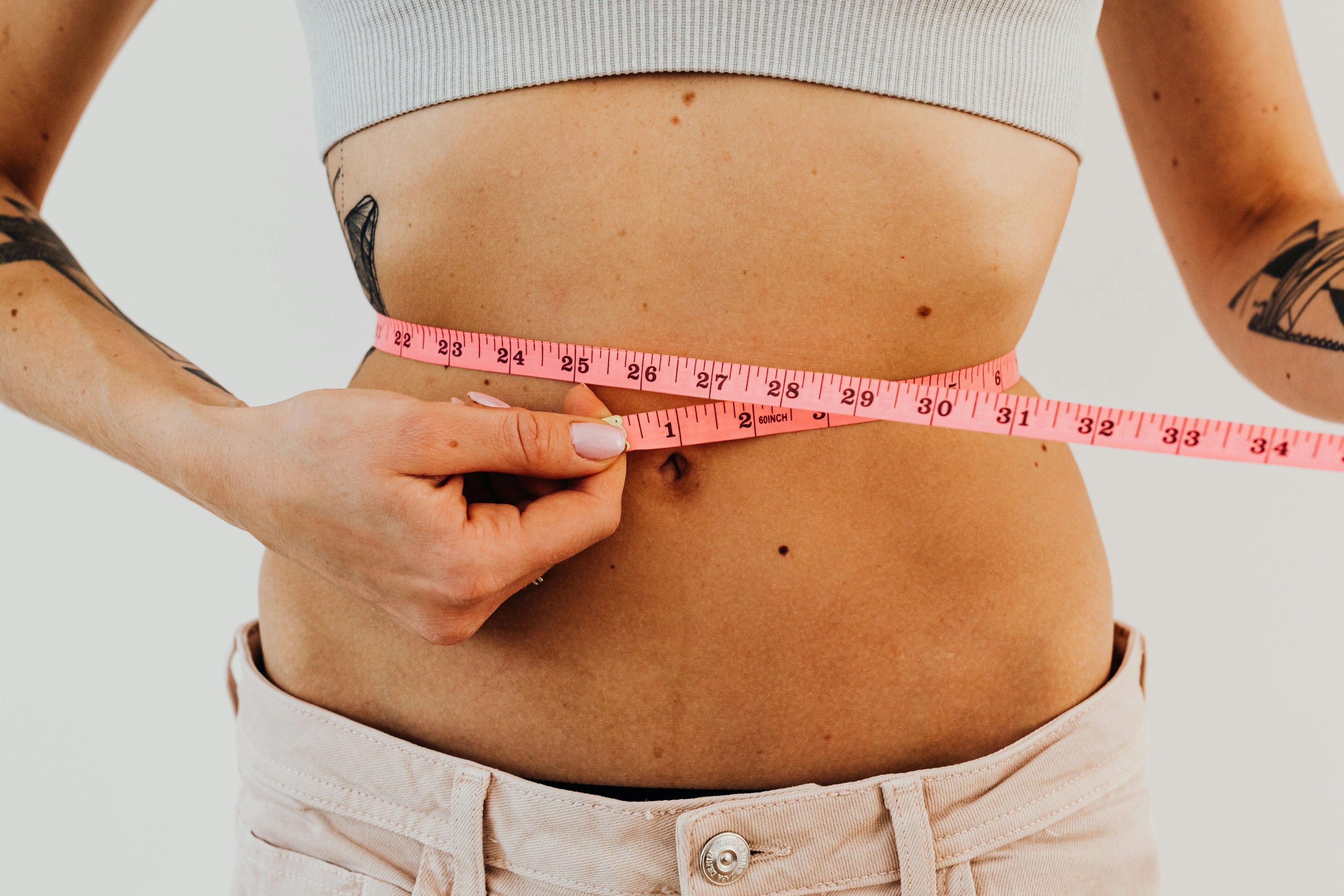
Flat for Beginners
For those new to core exercises, performing sit-ups on the NordBench in a flat position is an excellent starting point. Begin by lying on your back with your knees slightly bent and feet flat on the bench. Place your hands behind your head or across your chest. Engage your core by pulling your belly button toward your spine and lift your upper body slowly.
This beginner-friendly position reduces strain on the lower back while still effectively working the rectus abdominis and internal obliques. Focus on maintaining proper form by keeping your neck in a neutral position and avoiding pulling on your head.
Exhale as you lift and inhale as you lower your body back down. This basic variation helps in building foundational core strength, paving the way for more advanced movements. Consistency with this exercise can improve overall core stability, which is crucial for everyday life and other physical activities.

Russian Twists
Engaging Core Muscles
Russian twists on the NordBench are an effective way to engage your core muscles, targeting the obliques and transverse abdominis.
Start by sitting on the bench with your knees bent and feet flat, or slightly lift them for added challenge. Lean back slightly to find a comfortable balance point, ensuring your spine remains straight. Hold a medicine ball or simply clasp your hands together, and begin twisting your torso from side to side. Keep your arms straight and focus on moving the rotation from your core, not just your arms.
This exercise promotes core engagement and enhances rotational strength, which is vital for compound movements and activities involving the entire body. Make sure to breathe steadily, exhaling each time you twist. By incorporating Russian twists into your routine, you enhance your ability to maintain a stable core, which is beneficial for reducing belly fat and improving overall physical performance.

Proper Form and Technique
Maintaining proper form and technique during Russian twists is crucial for maximizing effectiveness and preventing injury. Begin by positioning yourself on the NordBench with your knees slightly bent and feet flat for stability.
Engage your core by pulling your belly button towards your spine, ensuring your back remains straight. As you perform the twist, keep your arms fully extended and move them as a unit with your torso.
Avoid the temptation to lead with your arms; the movement should originate from your core. Rotate your shoulders to ensure the twist engages your entire upper body, including the internal and external obliques. Keep your shoulder blades down and back to maintain a neutral spine and avoid excessive strain.
By focusing on proper form, you reduce the risk of chronic low back pain and enhance the exercise's impact on your abdominal muscles. Correct technique leads to greater core strength and improved performance in other physical activities.
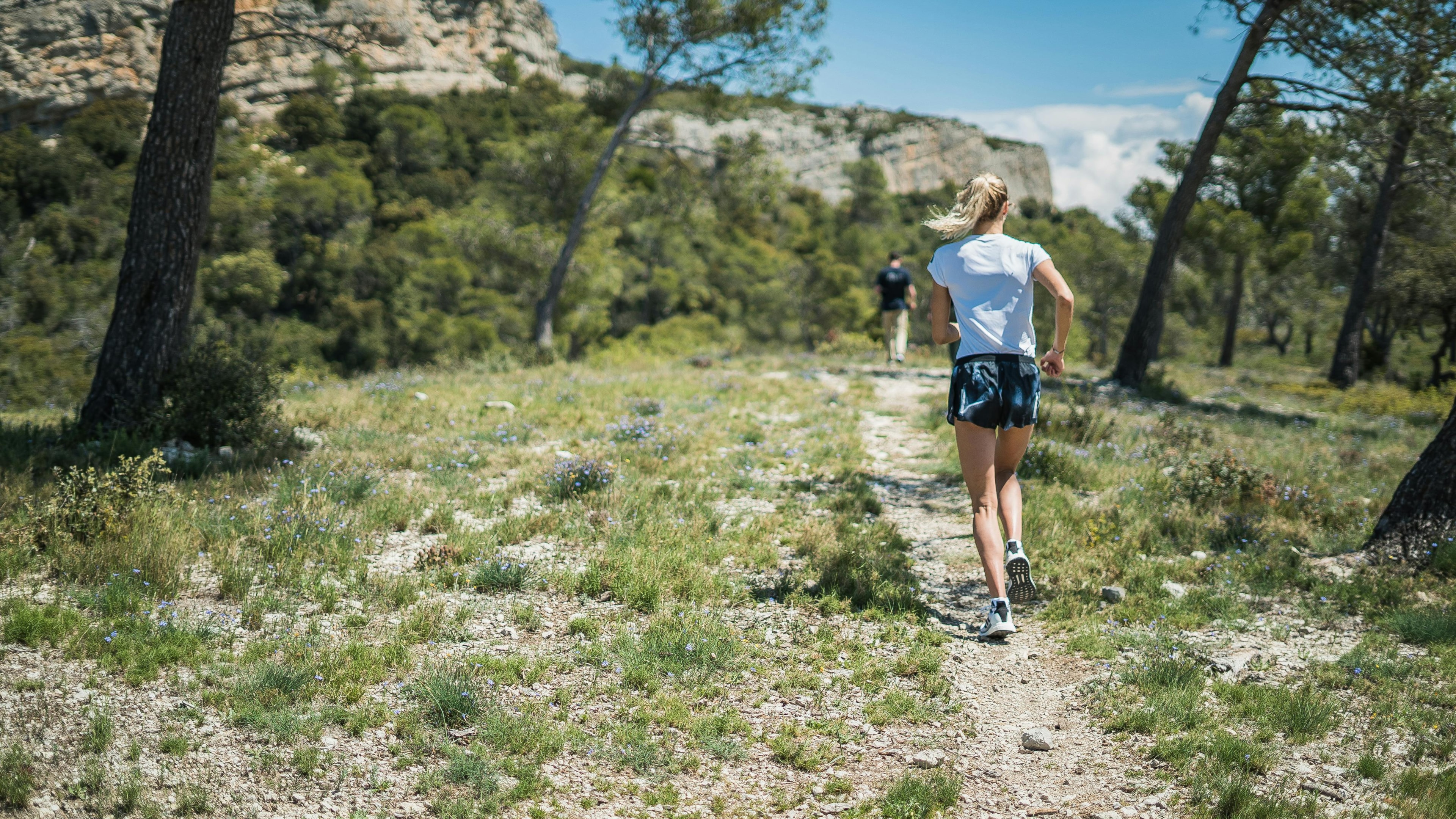
Variations for All Levels
Russian twists can be modified to suit different fitness levels, making them an accessible exercise for everyone.
Beginners might start by sitting on the NordBench with their feet flat on the ground to maintain stability. As they gain confidence and strength, they can lift their feet slightly off the bench to increase the core challenge.
For those seeking a more intense workout, holding a medicine ball or weight adds resistance, further engaging the abdominal muscles. Advanced variations might include extending the legs straight out or performing the twists at a faster pace, ensuring the core remains engaged throughout.
Regardless of the variation, it's important to maintain a straight line from the head to the hips, keeping the body stable. These modifications allow you to progressively increase the difficulty, enhancing your core strength and stability. By incorporating these variations, you can tailor your core workout to meet your evolving fitness goals and capabilities.
Back Extension
0 Degrees for Beginners
Starting back extensions at 0 degrees on the NordBench is ideal for those new to this exercise. Lying flat, this position minimizes the strain on your lower back while still targeting the key muscle groups of the lower back, glutes, and hamstrings.
Begin by lying face down with your legs extended and your feet flat against the footrest. Place your hands behind your head or across your chest. Engage your core and lift your upper body slowly, focusing on maintaining a neutral spine. Avoid hyperextending your back; instead, lift until your body forms a straight line from head to toe.
This beginner-friendly angle allows you to focus on proper form and strengthen your lower back safely. Performing this exercise regularly can help alleviate chronic low back pain by strengthening the muscles that support your spine. As you grow more comfortable, you can gradually increase the angle to introduce more challenge and enhance your core training.
30 Degrees for Intermediate
Increasing the angle to 30 degrees on the NordBench provides an intermediate level of challenge for back extensions. This adjustment intensifies the exercise, engaging a broader range of muscle groups in the lower back, glutes, and hamstrings. Begin by positioning yourself face down with your feet securely anchored.
Cross your arms over your chest or keep them at your sides. As you lift your upper body, maintain a neutral spine, ensuring your neck and back form a straight line. This angle requires more core engagement, helping to build strength and stability. Focus on controlled movements, exhaling as you lift and inhaling as you lower your body back down.
The increased angle promotes greater flexibility and strength, essential for supporting full body strength and preventing injuries. By incorporating this intermediate variation into your routine, you enhance your core workout, contributing to improved posture and reduced risk of chronic low back pain.

45 Degrees for Advanced
Performing back extensions at a 45-degree angle on the NordBench is a challenging exercise suited for advanced users.
This angle significantly increases the demand on your core muscles, lower back, and hamstrings. Start by lying face down with your feet securely positioned, ensuring your body is stable. Cross your arms or extend them forward for an added challenge, which engages the shoulder muscles.
Focus on lifting your upper body with precise control, maintaining a straight line to avoid arching your back. This advanced variation requires strong core engagement to support the movement, offering significant benefits for strengthening the posterior chain.
As you perform the exercise, exhale as you lift and inhale as you return to the starting position, keeping the movement fluid and controlled. Incorporating this advanced angle into your routine enhances your core training, improving your ability to maintain proper form and stability in various physical activities, contributing to overall athletic performance.

Conclusion
Incorporating the NordBench into your fitness routine opens up a world of possibilities for strengthening your core muscles. From modified sit-ups and Russian twists to back extensions, the versatility of this equipment caters to all fitness levels, allowing you to progress safely and effectively.
By starting with angles and variations suited to your current capabilities, you can gradually build a strong core, essential for improved posture, reduced risk of injury, and enhanced performance in everyday life. Whether you're working out at home or looking to diversify your core training regimen, the NordBench offers a practical solution to achieve your fitness goals.
Consistent practice with these exercises not only boosts core strength but also contributes to overall well-being and physical health. Remember, the journey to a strong core is a progressive one, and with dedication and the right tools, you can achieve remarkable results.
FAQs
What is the most effective core exercise?
Determining the most effective core exercise depends on individual goals and fitness levels, but the plank is often regarded as a top choice. This exercise engages multiple core muscles simultaneously, including the transverse abdominis, rectus abdominis, and obliques, providing a comprehensive workout.
To perform a plank, start in a high plank position with your hands directly under your shoulders, arms fully extended, and your body forming a straight line from head to heels. Engage your core by pulling your belly button toward your spine and maintain a neutral spine. Hold this position for as long as you can while maintaining proper form.
The plank not only strengthens your core muscles but also improves stability and posture, making it a functional exercise for everyday activities. Incorporating planks into your routine can lead to improved core strength and greater overall physical resilience, supporting a healthier, more active lifestyle.
What are the 5 fastest ways to strengthen your core?
To quickly strengthen your core, focus on a combination of effective exercises and consistent practice. Here are five strategies:
-
Planks: Engage your entire core by holding a plank position, ensuring your body remains in a straight line with a neutral spine.
-
Russian Twists: Incorporate rotations to target the obliques, using a medicine ball for added resistance.
-
Sit-Ups: Perform sit-ups on a NordBench at various angles to progressively challenge your abdominal muscles.
-
Leg Raises: Lie flat on your back and lift your legs, keeping them straight to work your lower abs effectively.
-
Bird Dogs: While on all fours, extend opposite arm and leg, focusing on maintaining core stability and balance.
Incorporating these exercises into your routine with proper form and regularity is key to developing strong core muscles. Consistency, alongside a balanced diet and overall physical activity, will expedite your progress and enhance your core strength.
What are the big three core exercises?
The "big three" core exercises are often highlighted for their effectiveness in building foundational strength and stability. These exercises are:
-
Planks: Planks engage the entire core, including the transverse abdominis, rectus abdominis, and obliques. Holding a plank position challenges your stability and endurance, making it an excellent exercise for overall core engagement.
-
Dead Bugs: This exercise works the deep core muscles by lying on your back and moving the opposite arm and leg while keeping the lower back pressed into the ground. Dead bugs help improve coordination and core control.
-
Russian Twists: By incorporating rotational movements, Russian twists target the obliques and improve your ability to stabilize the core during dynamic movements. This exercise is particularly beneficial for enhancing rotational strength and balance.
Incorporating these exercises into your routine provides a comprehensive approach to strengthening the core, supporting better posture, and enhancing physical performance in various activities.

What is the number 1 best exercise for abs?
While opinions may vary, the bicycle crunch often ranks as the top exercise for targeting the abdominal muscles effectively. This dynamic movement engages the rectus abdominis, obliques, and even the transverse abdominis, providing a full range of motion and core engagement.
To perform a bicycle crunch, lie flat on your back with your hands behind your head and legs lifted. Begin by bringing your right elbow toward your left knee while extending your right leg. Alternate sides in a pedaling motion, ensuring that your shoulder blades lift off the ground with each twist. This exercise mimics the pedaling motion of a bicycle, thus delivering an intensive ab workout that emphasizes both the upper and lower abs.
Maintaining proper form is crucial to avoid neck strain and maximize effectiveness. Regularly incorporating bicycle crunches into your routine can significantly enhance your core strength and definition, aiding in the reduction of belly fat.




































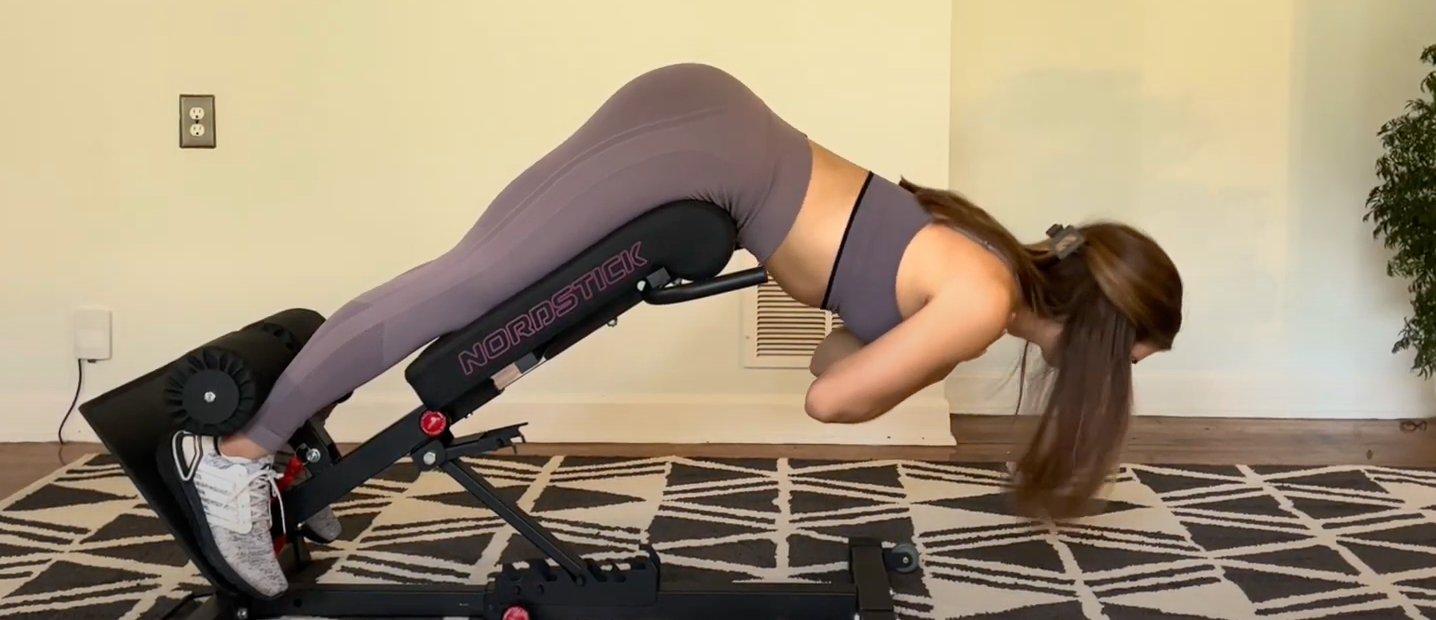

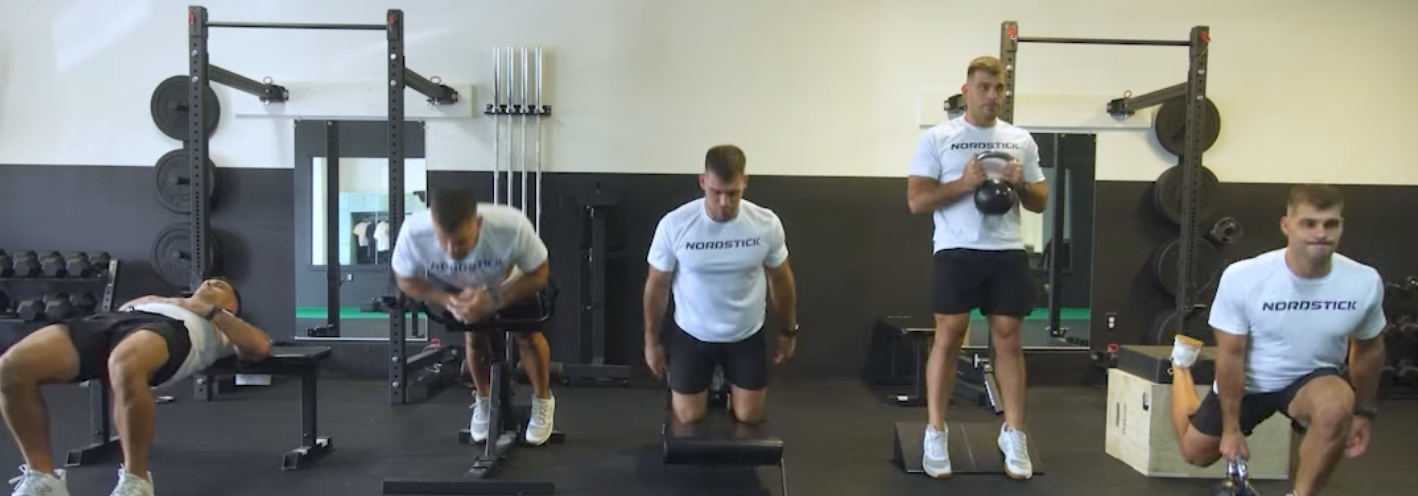



Leave a comment
This site is protected by hCaptcha and the hCaptcha Privacy Policy and Terms of Service apply.